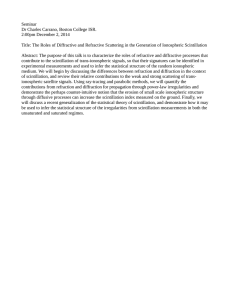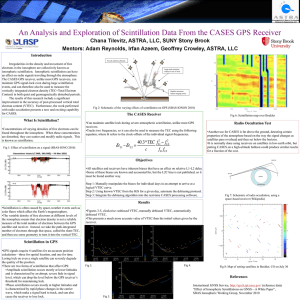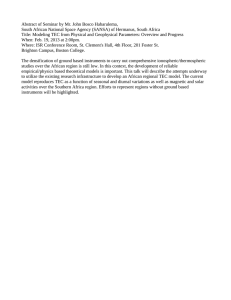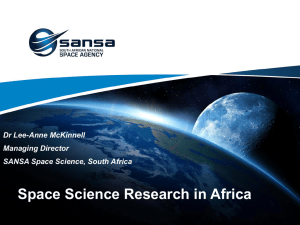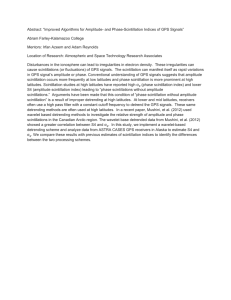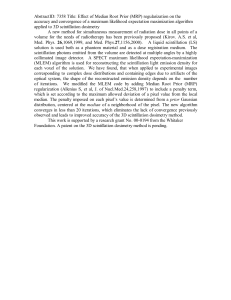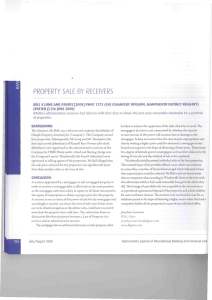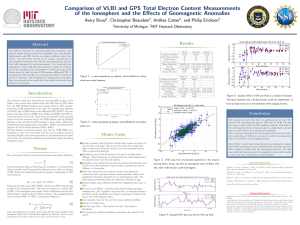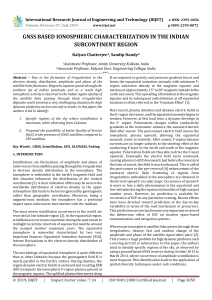An Analysis and Exploration of Scintillation Data from the CASES GPS Receiver
advertisement
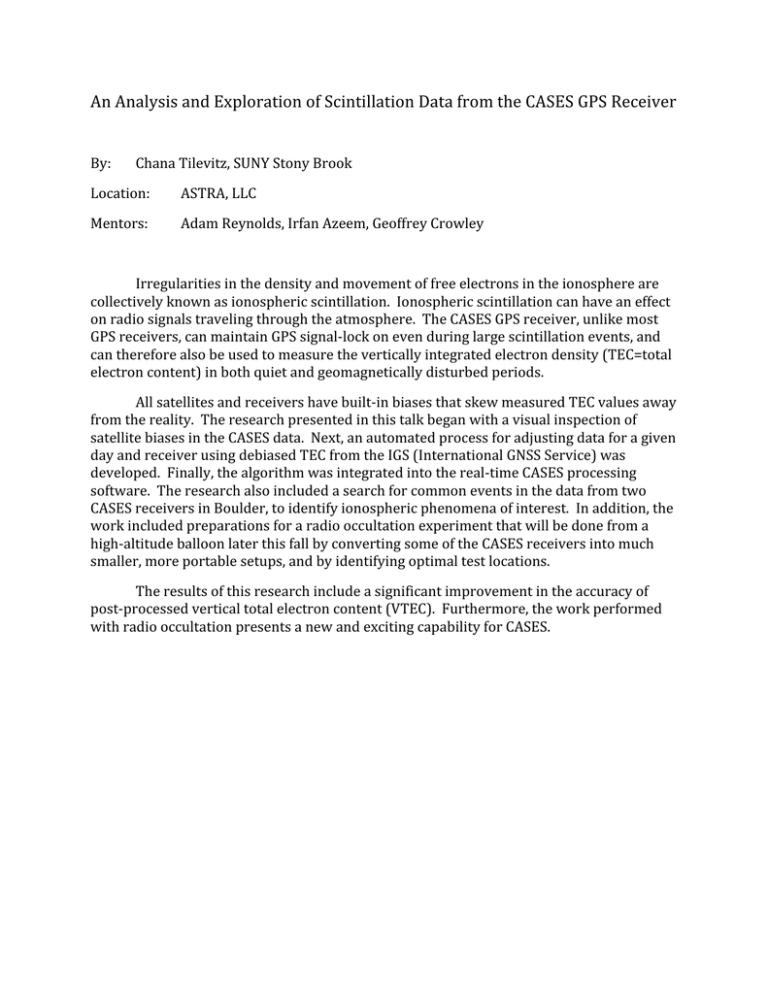
An Analysis and Exploration of Scintillation Data from the CASES GPS Receiver By: Chana Tilevitz, SUNY Stony Brook Location: ASTRA, LLC Mentors: Adam Reynolds, Irfan Azeem, Geoffrey Crowley Irregularities in the density and movement of free electrons in the ionosphere are collectively known as ionospheric scintillation. Ionospheric scintillation can have an effect on radio signals traveling through the atmosphere. The CASES GPS receiver, unlike most GPS receivers, can maintain GPS signal‐lock on even during large scintillation events, and can therefore also be used to measure the vertically integrated electron density (TEC=total electron content) in both quiet and geomagnetically disturbed periods. All satellites and receivers have built‐in biases that skew measured TEC values away from the reality. The research presented in this talk began with a visual inspection of satellite biases in the CASES data. Next, an automated process for adjusting data for a given day and receiver using debiased TEC from the IGS (International GNSS Service) was developed. Finally, the algorithm was integrated into the real‐time CASES processing software. The research also included a search for common events in the data from two CASES receivers in Boulder, to identify ionospheric phenomena of interest. In addition, the work included preparations for a radio occultation experiment that will be done from a high‐altitude balloon later this fall by converting some of the CASES receivers into much smaller, more portable setups, and by identifying optimal test locations. The results of this research include a significant improvement in the accuracy of post‐processed vertical total electron content (VTEC). Furthermore, the work performed with radio occultation presents a new and exciting capability for CASES.
